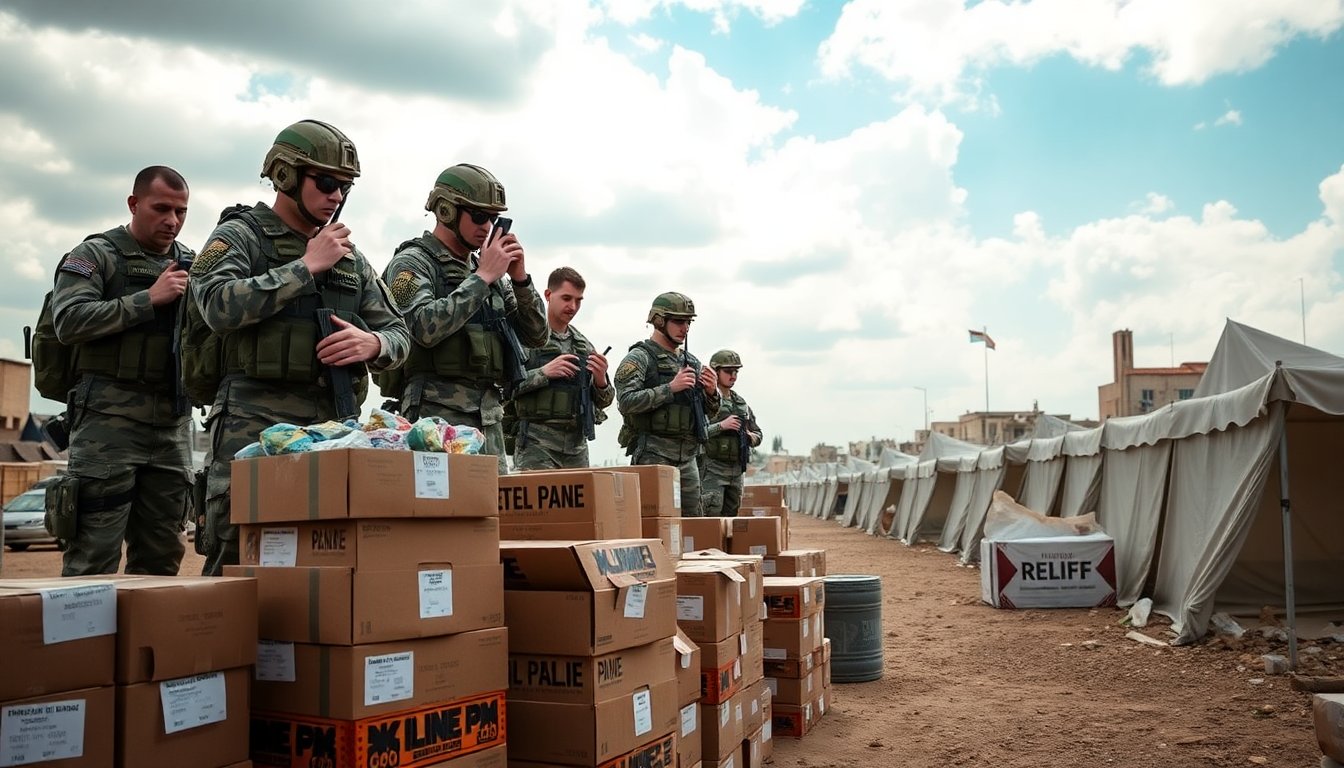Table of Contents
In a notable change in operational dynamics, the United States has enhanced its involvement in Gaza to support a fragile ceasefire established in the region. This shift redefines Israel’s traditional role in managing humanitarian aid and marks a new chapter in the ongoing conflict and its resolution.
With the U.S. military now spearheading aid coordination, many observers are closely monitoring how this will impact the delivery of essential supplies to Gaza’s residents.
Transition of humanitarian oversight
Oversight of humanitarian deliveries has shifted from Israel’s Coordinator of Government Activities in the Territories (COGAT) to the newly established Civil-Military Coordination Center (CMCC), which is overseen by the U.S.
military. This transition is part of a broader peace initiative introduced by President Donald Trump. However, sources indicate that the early weeks of CMCC operations have been characterized by disorganization and a lack of effective response.
U.S. influence on aid delivery
The U.S.-led Central Management Coordination Center (CMCC), located just south of the Gaza border, now makes the final decisions on humanitarian aid. While Israel continues to be consulted in the process, reports indicate that aid access remains severely restricted.
Israeli authorities tightly control the flow of supplies, leading to increased difficulties for those in need. Direct access to northern Gaza has been cut off since early September, exacerbating the already critical humanitarian situation.
Jan Egeland, a key representative of the Norwegian Refugee Council, has criticized Israel for hindering the humanitarian provisions specified in the Trump plan.
He noted that U.S. involvement is crucial, stating, “Having the U.S. actively engaged is a very positive development for humanitarian efforts in the region.” In response to ongoing tensions, the CMCC has commenced drone surveillance over Gaza to oversee aid deliveries and ensure compliance with the ceasefire.
This initiative is designed to exert pressure on Hamas, which has regained control of several areas previously occupied by Israeli forces.
Rising tensions and violence
Despite a declared ceasefire, violence in the region continues to escalate. Recent reports from the United Nations indicate that Israeli settlers carried out 264 attacks against Palestinians in the occupied West Bank during October. This marks the highest monthly total since the U.N. began tracking such incidents in 2006, averaging eight attacks per day.
Impact on civilians
This year, the U.N. Office for the Coordination of Humanitarian Affairs (OCHA) has documented over 9,600 attacks, with approximately 1,500 occurring in 2025. Tragically, 42 Palestinian children have been killed by Israeli forces in the West Bank this year, meaning that one in five Palestinians who have died in the area has been a child. This alarming statistic underscores the urgent need for humanitarian intervention and highlights the severe impact of ongoing violence.
Amid escalating tensions, the Israeli military has confirmed the return of the body of a deceased hostage to Israel. The body is currently being processed at the National Institute of Forensic Medicine. This development highlights the ongoing human toll of the conflict.
International reactions and implications
International responses to the increasing violence and humanitarian crisis differ significantly. Turkey has issued arrest warrants for Israeli officials, accusing them of genocide related to military actions in Gaza. Concurrently, pro-Palestinian protests have intensified worldwide, with activists disrupting cultural events to advocate for Palestinian rights.
Azerbaijan’s conditional support for Gaza stabilization
Azerbaijan has recently indicated that it would consider sending troops to Gaza only as part of a U.S.-backed stabilization force. This decision hinges on a complete cessation of hostilities in the area. This statement underscores the complex international relations at play as nations respond to the ongoing crisis.
The increased involvement of the U.S. military in Gaza marks a significant shift in the humanitarian situation in the region. As Israel’s oversight of aid diminishes, the international community is closely observing the potential impact of this transition on the lives of those in Gaza and the broader implications for regional peace.





